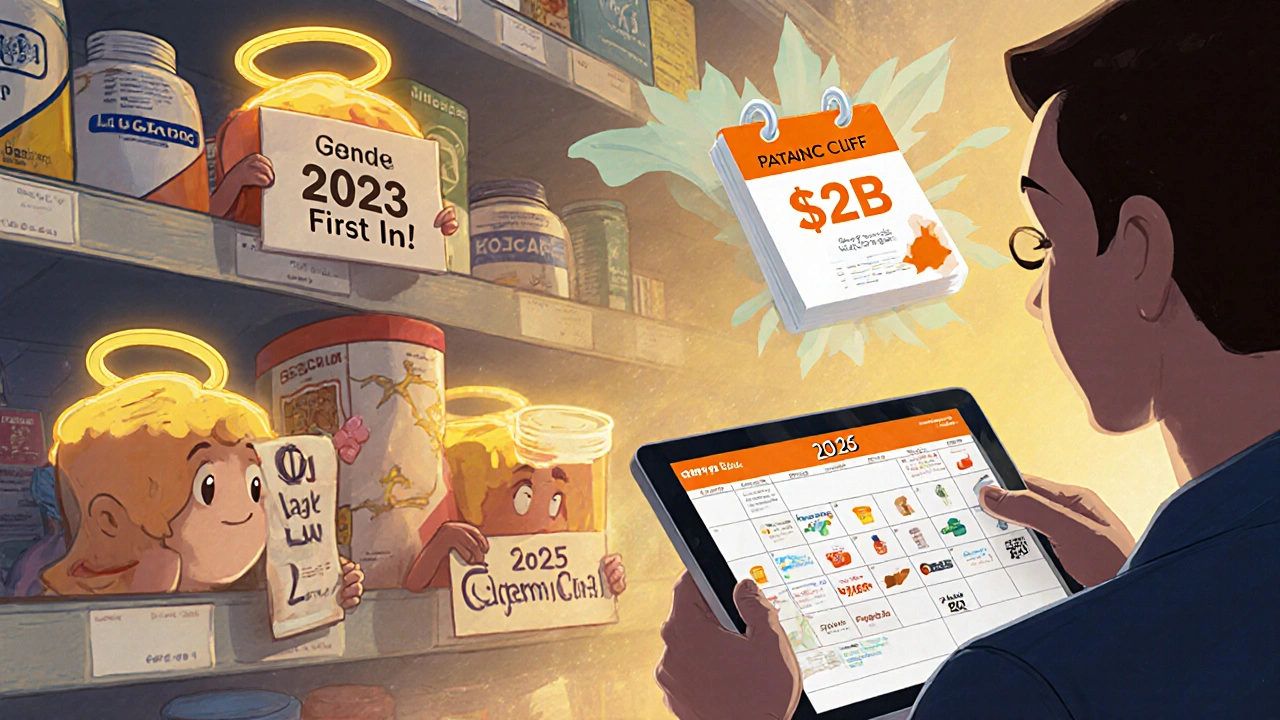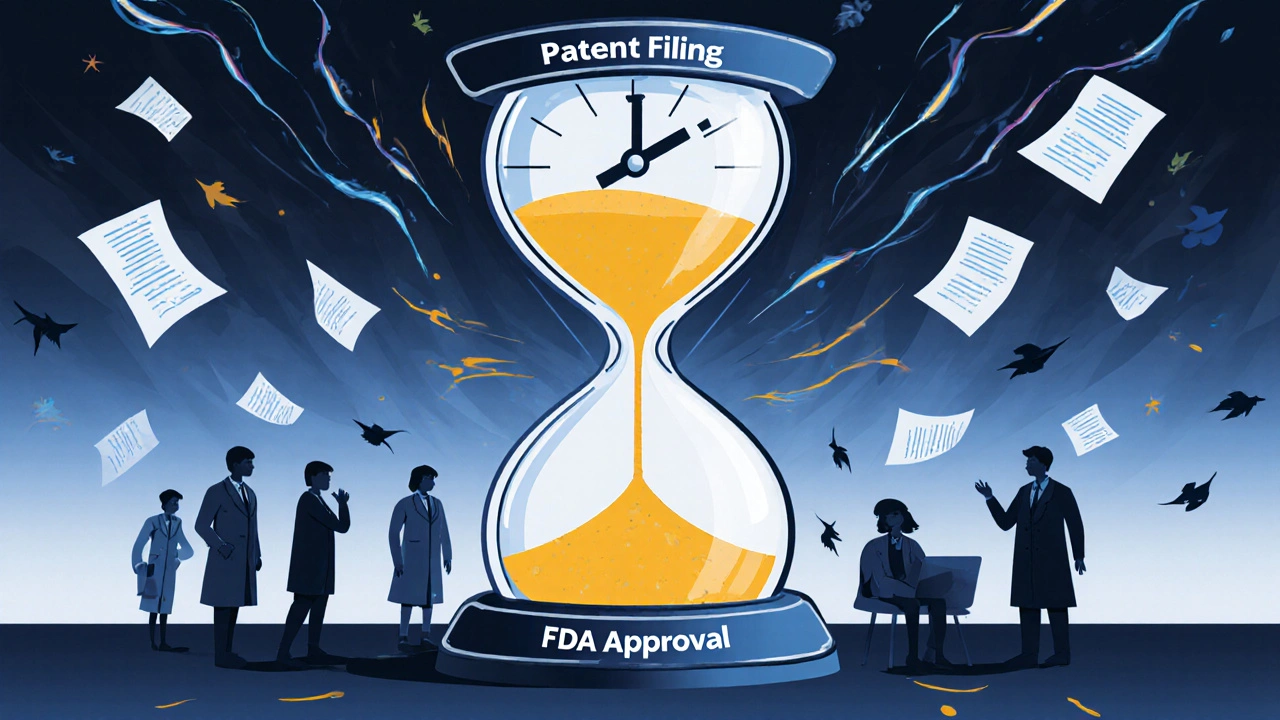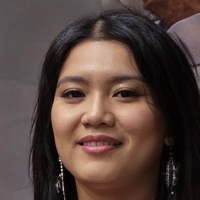Most people assume a drug patent lasts 20 years - and that’s technically true. But if you’re waiting for a brand-name medication to become cheaper because the patent ran out, you might be waiting much longer than expected. Or worse, you might think it’s already expired when it’s not. The truth is, drug patent expiration rarely means 20 years of market control. In fact, most drugs only enjoy 7 to 12 years of real exclusivity before generics can enter the market.
Why the 20-Year Clock Starts Before the Drug Even Hits Shelves
The 20-year patent term begins when the patent application is filed - not when the drug is approved. That’s a critical detail. Most drugs take 8 to 12 years just to get through clinical trials and FDA review. By the time a new pill hits pharmacies, half the patent term is already gone. For example, if a company files a patent in 2010 for a new cancer drug, and the FDA approves it in 2020, the patent only has 10 years left. But because the drug can’t be sold until approval, the company only has a decade to make back its $2.3 billion R&D investment. That’s why so many drugs feel expensive for so long - the clock is ticking from day one, even while the drug is still being tested.How the Law Gives Pharma Extra Time - And Why It Matters
There’s a legal loophole built into U.S. patent law called the Hatch-Waxman Act of 1984. It lets drugmakers apply for a Patent Term Extension (PTE) to make up for lost time during FDA review. They can get up to five extra years of protection - but with a catch: the total market exclusivity can’t exceed 14 years from the date of FDA approval. Let’s say a drug gets approved in 2022. Even if the original patent would expire in 2030, the company can stretch it to 2036 - if they applied correctly and met all the rules. But here’s the kicker: they have just 60 days after FDA approval to file for this extension. Miss that window, and they lose it forever. Many small companies miss it because the process is complex and expensive. Then there’s Patent Term Adjustment (PTA). If the USPTO takes too long to approve the patent - say, they don’t issue a first review within 14 months - the patent gets extra days added on. This isn’t automatic. It’s calculated based on delays caused by the government, not the applicant. In 2023, DrugPatentWatch found that nearly 60% of new drug patents received some form of PTA, adding an average of 2.5 years to the term.It’s Not Just One Patent - It’s a Stack
Pharmaceutical companies don’t rely on one patent. They build a wall of them. A single drug might have:- A patent on the active ingredient
- A patent on the specific tablet coating
- A patent on how it’s manufactured
- A patent on how it’s used to treat a second condition
Regulatory Exclusivity: The Hidden Clock
Even if a patent expires, another clock might still be running. The FDA gives different kinds of exclusivity that block generics, separate from patents:- New Chemical Entity (NCE) exclusivity: 5 years - the FDA can’t even look at a generic application during this time.
- Orphan Drug exclusivity: 7 years for drugs treating rare diseases (fewer than 200,000 U.S. patients).
- New Clinical Investigation exclusivity: 3 years if the drug gets a new use or dosage requiring new studies.
- Pediatric exclusivity: 6 months added to any existing patent or exclusivity period if the company does extra studies on kids.

What Happens When the Patent Finally Expires?
Once all protections fall away, the market shifts fast. For small-molecule drugs (pills and injections), generic versions usually capture 90% of sales within 18 months. Prices drop by 60% to 80% in the first year. Take Eliquis (apixaban). When its patent expired in December 2022, generics hit the market in mid-2023. By June 2023, they held 35% of the market. By the end of the year, prices had dropped 62%. But biologics - complex drugs made from living cells, like Humira or Enbrel - are different. Their generics, called biosimilars, take longer to develop and get approved. They’re not exact copies. So even after patent expiry, it can take 2 to 4 years for biosimilars to gain real market share. They usually capture only 40% to 60% of sales.The Patent Cliff: A $62 Billion Problem in 2025
The term “patent cliff” refers to the sudden drop in revenue when multiple big drugs lose protection at once. In 2025, the industry is facing its biggest cliff yet. Evaluate Pharma predicts $62 billion in lost revenue this year alone - the highest single-year loss ever. Drugs like Keytruda, Stelara, and Rinvoq are all due to lose protection between 2025 and 2028. Companies are scrambling to extend their reach with combo therapies, new delivery systems, or companion diagnostics. AstraZeneca’s Tagrisso, for example, still has patent protection until 2033 - even though its core compound patent expired in 2026 - because of layered patents on dosing and use.What’s Being Done to Change This System?
Critics say the system is being gamed. The FTC has documented cases where companies file dozens of minor patents - like a new pill shape or packaging - just to delay generics. These “evergreening” tactics can push back generic entry by 2 to 3 years. In February 2024, Congress introduced the “Restoring the America Invents Act,” which would cut back on Patent Term Adjustments. If passed, it could shave 6 to 9 months off the average drug’s exclusivity period. Meanwhile, the World Health Organization is pushing for global patent terms to be shortened to 15 years to improve access to medicines. The pharmaceutical industry pushes back, arguing that without the current system, no company would invest billions in risky drug development.
How to Find Out When a Specific Drug’s Patent Expires
If you’re wondering when your prescription will go generic, check the FDA’s Orange Book. It’s the official list of all approved drugs and their patents. Almost every brand-name company submits this information within 30 days of approval. You can also use free tools like DrugPatentWatch or GoodRx, which track expiration dates and generic launch timelines. But be careful - some sites list the patent filing date, not the actual expiration. Always look for the “patent expiration date” or “exclusivity end date.”What Patients Should Know
You might be surprised to find that your insurance copay jumps after a patent expires - not drops. Why? Because some insurers switch to a higher-cost generic version that’s not yet fully competitive. Or they might delay switching until after pediatric exclusivity ends, even if the patent is gone. If you’re on a high-cost drug and your copay suddenly spikes, ask your pharmacist: “Is there a generic available? Is there one coming soon?” Sometimes, the answer is yes - but you need to ask.Bottom Line: Patents Don’t Expire on a Calendar - They Expire in Layers
A drug doesn’t just have one patent. It has patents, exclusivity periods, litigation delays, and regulatory hurdles - all stacked like layers of an onion. The 20-year term is just the starting point. The real expiration date is a puzzle made of law, science, and corporate strategy. If you’re waiting for a drug to get cheaper, don’t just look at the year. Look at the filings. Check the FDA exclusivity. Watch for generic announcements. And don’t assume the patent clock runs like a simple timer - it doesn’t. It’s a maze. And the exit isn’t always where you expect it to be.How long do drug patents really last?
The nominal term is 20 years from the patent filing date, but most drugs only have 7 to 12 years of actual market exclusivity because clinical trials take 8-12 years. Extensions like Patent Term Extension (PTE) and Pediatric Exclusivity can add up to 5.5 extra years, so the real expiration date is often later than expected.
Can a drug have multiple patents?
Yes. A single drug can be protected by dozens of patents covering the active ingredient, formulation, manufacturing process, and new uses. This layered approach, called “patent thickets,” is common in the industry and can delay generic entry by years.
What’s the difference between a patent and regulatory exclusivity?
A patent is a legal right granted by the USPTO to prevent others from making the drug. Regulatory exclusivity is granted by the FDA and blocks generic applications even if no patent exists. For example, a New Chemical Entity gets 5 years of exclusivity - no generic can even be reviewed during that time.
Why do generic drugs cost so much right after a patent expires?
Sometimes insurers or pharmacies switch to a higher-cost generic that’s not yet widely available. Other times, the first generic maker gets 180 days of exclusivity and charges premium prices before others enter. Prices usually drop sharply after 6-12 months as more generics arrive.
How can I find out when my drug’s patent expires?
Check the FDA’s Orange Book, which lists all approved drugs and their patents. Free tools like GoodRx and DrugPatentWatch also track expiration dates. Always confirm whether the date shown is for the patent or for regulatory exclusivity - they’re not the same.
Do biologics expire the same way as regular drugs?
No. Biologics are more complex and can’t be copied exactly. Their generics, called biosimilars, require more testing and take longer to get approved. Even after patent expiry, biosimilars may take 2-4 years to gain market share and usually capture only 40-60% of sales.

